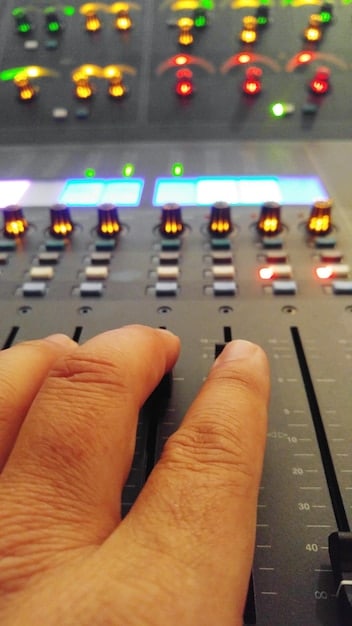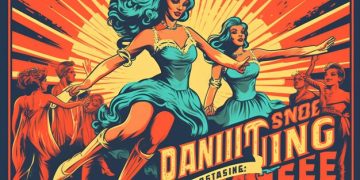Discover the Magic of Indie Film Soundtracks: Unsung Heroes of Movie Music

Indie film soundtracks often feature unique and innovative music choices, highlighting emerging artists and experimental sounds that significantly enhance the storytelling and emotional depth of independent cinema.
Dive into the captivating world of indie film soundtracks, where the music often becomes as iconic as the films themselves. These soundtracks are not just background noise; they’re carefully curated collections that amplify the emotional impact and narrative depth of independent cinema.
The Soul of Indie Cinema: Understanding the Role of Soundtracks
Indie films are known for their unique storytelling and artistic expression, and their soundtracks play a crucial role in shaping the audience’s experience. Unlike mainstream blockbusters that often rely on popular hits, indie film soundtracks typically feature original compositions, lesser-known artists, and eclectic genres, creating a distinctive auditory landscape.
The music in indie films isn’t just an afterthought; it’s an integral part of the narrative, acting as a character in its own right. These soundtracks often reflect the film’s themes, enhance emotional moments, and even provide commentary on the story unfolding on screen.

Soundtracks as Storytellers
Indie filmmakers often collaborate closely with composers and music supervisors to create soundtracks that complement their vision. This collaborative process allows for a more bespoke and tailored musical experience, where every note and sound effect is carefully considered.
The use of diegetic sound, where the music or sound originates from within the film’s world, is also a common technique in indie films. This can blur the lines between music and sound design, creating a more immersive and engaging experience for the viewer.
- Enhancing Emotional Impact: Music amplifies feelings, making scenes more powerful.
- Narrative Depth: Soundtracks expand on the story, offering insights.
- Character Development: Music can reflect or contrast character traits.
- Creating Atmosphere: Soundtracks set the mood.
Ultimately, the soul of indie cinema lies in its ability to innovate and experiment, and the soundtracks are no exception. They push boundaries, challenge conventions, and offer a fresh perspective on the art of filmmaking.
Discovering Hidden Gems: Iconic Indie Soundtracks to Explore
Many indie films have gained cult classic status, and their soundtracks have become equally beloved. These soundtracks often introduce listeners to new artists and genres, expanding their musical horizons. The following soundtracks are considered essential listening for any fan of indie cinema.
Exploring these iconic soundtracks reveals not just great music, but also the power of collaboration between filmmakers and musicians. They prove how a well-crafted soundtrack can elevate a film from good to unforgettable.
Lost in Translation (2003)
Directed by Sofia Coppola, “Lost in Translation” features a dreamy and melancholic soundtrack with artists like Air, My Bloody Valentine, and The Jesus and Mary Chain. The music perfectly captures the film’s themes of alienation and connection.
Garden State (2004)
Zach Braff’s “Garden State” helped catapult indie artists like The Shins and Iron & Wine into the mainstream. The soundtrack is a mix of folk, alternative rock, and electronic music, reflecting the film’s themes of self-discovery and finding your place in the world.
- Pulp Fiction (1994): A blend of surf rock, soul, and vintage pop, creating an electrifying atmosphere.
- Trainspotting (1996): Showcases Britpop and electronic music, reflecting the energy of the film.
- Juno (2007): Featuring the anti-folk sounds of Kimya Dawson, the album is joyful.
These selections are only a starting point; many other indie film soundtracks deserve recognition. Exploring these musical landscapes offers rewards.
The Role of Music Supervisors: Curators of Sound in Indie Films
Behind every great indie film soundtrack, there’s a music supervisor. These professionals play a vital role in selecting and licensing music that enhances the film’s narrative and emotional impact. They work closely with directors, editors, and composers to ensure that the music perfectly complements the story being told.
Music supervisors must have a deep understanding of both music and film. They need to be able to identify the right song for a particular scene, negotiate licensing fees, and manage the entire music budget. In the world of indie films, where budgets are often tight, music supervisors have become masters of creativity and resourcefulness.
Finding the Perfect Song
One of the key responsibilities of a music supervisor is to find the perfect song for a particular scene. This requires a deep understanding of the film’s themes, characters, and overall tone. They might spend hours listening to music, scouring through databases, and reaching out to artists and labels to find the ideal track.
Negotiating Licensing Fees
Once a song has been selected, the music supervisor must negotiate the licensing fees with the copyright holders. This can be a complex and time-consuming process, especially for indie films with limited budgets. Music supervisors often need to be creative and resourceful in order to secure the rights to the songs they want to use.
- Creative Vision: Understanding the director’s artistic goals.
- Music Expertise: A vast knowledge of genres, artists, and musical styles.
- Negotiation Skills: Securing affordable licenses.
- Industry Connections: Building relationships with artists and labels.
The work of music supervisors is critical to independent cinema, contributing creative insight.
From the Streets to the Silver Screen: The Influence of Grassroots Music
Indie films have a long and storied history of featuring grassroots music, often showcasing emerging artists and local bands. This approach not only adds authenticity to the film’s soundtrack but also provides a platform for unsigned musicians to reach a wider audience.
By incorporating grassroots music, indie filmmakers are able to capture the unique sounds and rhythms of a particular time and place. This can help to create a more immersive and believable world for the audience, drawing them deeper into the story.
Capturing Authentic Sounds
The use of grassroots music can add a layer of authenticity to a film, making it feel more grounded and real. This is especially important for indie films that often deal with themes of everyday life and the struggles of ordinary people. By featuring music that reflects the experiences and perspectives of these characters, filmmakers can create a more resonant and impactful story.
Providing a Platform for Emerging Artists
Indie films can provide a valuable platform for emerging artists, helping them to reach a wider audience and gain exposure. Many successful musicians have gotten their start by having their music featured in an indie film. This can be a mutually beneficial relationship, as the film gains a unique and original soundtrack.
| Key Point | Brief Description |
|---|---|
| 🎵 Unique Soundtracks | Amplify the emotional depth of independent films. |
| 🎬 Role of Supervisors | Curate music to enhance the narrative. |
| 🎤 Grassroots Music | Showcase emerging artists and authentic sounds. |
| 🌟 Iconic Albums | Discover albums that have defined indie film music history. |
▼
Indie film soundtracks usually feature emerging artists and experimental sounds, enhancing the narrative with lesser-known tracks. This approach sets them apart from commercial soundtracks dominated by mainstream hits.
▼
Music supervisors work closely with directors to select and license music, ensuring it fits the film’s tone and themes. They negotiate licensing fees and manage the music budget, often creatively due to tight restrictions.
▼
Grassroots music adds authenticity and showcases emerging artists. It helps capture unique sounds relevant to the film, adding a layer of realism that resonates with viewers.
▼
Yes, exposure in an indie film can significantly boost an artist’s career. It provides a broader audience and can lead to increased recognition, record deals, and further opportunities.
▼
Exploring indie film soundtracks offers rewards, exposing listeners to innovative sounds and hidden musical gems. These soundtracks often amplify the overall experience.
Conclusion
The world of indie film soundtracks is a treasure trove of musical innovation and artistic expression waiting to be discovered. These soundtracks are not just collections of songs but carefully curated soundscapes that enhance the storytelling and emotional impact of independent cinema. By exploring these hidden gems, you’ll gain a deeper appreciation for the power of music in film and discover new artists and genres along the way.





